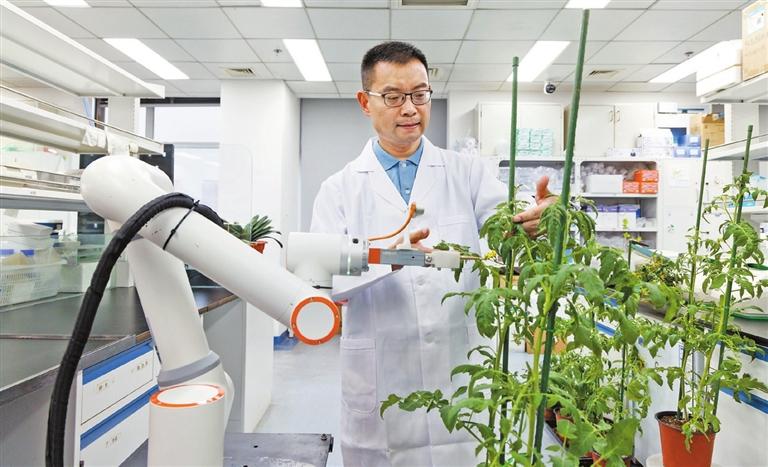

CHINESE scientists have achieved a breakthrough in intelligent crop breeding by combining biotechnology with artificial intelligence (AI) to introduce the world’s first crop — robot co‑design concept. Using gene editing, the team redesigned floral structures to create “robot‑friendly” flowers, enabling the development of GEAIR, an AI‑powered plant‑breeding robot. The technology promises to shift breeding from experience‑driven methods to precision agriculture, the Institute of Genetics and Developmental Biology (IGDB) of the Chinese Academy of Sciences (CAS) said. The study was published Monday in the journal Cell. What once belonged in science fiction is now reality: in a greenhouse, GEAIR can accurately identify a flower, extend its robotic arm and gently perform hybrid pollination. It moves among plants and autonomously completes the entire breeding process. “AI and robotics create vast opportunities for the transition to precision agriculture, increasing crop yields and reducing costs,” said Xu Cao, a researcher at IGDB. Traditional hybrid breeding improves yield and quality but requires massive, repetitive cross‑pollination tasks that are time‑consuming and labor‑intensive. Using AI visual recognition and precise positioning, GEAIR navigates crops to perform cross‑pollination operations, substantially boosting breeding efficiency. In soybean breeding, for example, the robot can rapidly create stigma‑exserted, male‑sterile lines, significantly raising per‑unit yields, Xu said. The research team demonstrated that GEAIR can accelerate automated breeding and lower costs while supporting the development of climate‑resilient crops, said Yang Minghao, an associate researcher at the CAS Institute of Automation. (Xinhua) | 
